Water-based automotive paints mix, spray, and dry differently from solvent-based products. Read on to learn more about key performance differences and how you can get excellent results using water-based coatings.
Water-based and solvent-based paint technologies are similar in their core composition. Both contain pigment for color, a binder to form the paint film, and a carrier that transports the pigment and binder through the spray gun onto the surface being painted.
Both paint types typically use similar pigments. Using only the best pigments helps each achieve OE color matching objectives, and helps optimize light refractivity. The binders in both water-based and solvent-based paints are variations of acrylic technology, to give the durability needed for an automotive exterior coating. The key difference is the carrier: solvent or water. When it’s water, painters must adjust their mixing, spraying, and drying techniques.
Mixing

For water-based paint, the painter adds water instead of solvent at the mixing step in the process. There are versions of water-based paint that are pre-mixed with water. Consider, however, that if a pre-mixed product gets below 32 deg. F., ice crystals form in the paint, rendering it unusable, even after the ice melts. If your shop is in a part of the country that has very cold winters, and the paint room is not heated 24 hours a day, an overnight cold snap can cause a costly loss of your paint inventory.
The ratio of reducer or thinner to be added to water-based or solvent-based paints differs. You will hear rule-of-thumb guidelines about the mix ratio for water-based product, but the best advice is to always follow the paint manufacturer’s mixing instructions. Different paint manufacturers may use different formulas to achieve a given sprayability, color appearance, gloss level, or other key performance factors. Use of anything other than the paint manufacturer’s mixing instructions is likely to alter your result.
Spraying
As the water evaporates after spraying water-based paint, latex molecules are attracted to each other, creating a strong chemical bond (polymer chains) as the particles join together. Once the water has fully evaporated, water-based paints are thermoset. The surface is permanent, and the only potential repair is to sand it and re-spray.
Avoiding the need for re-work is easy. Paint manufacturer worksheets spell out step-by-step procedures, such as how to select the spray nozzle opening, set spray pressure and the number of coats, and the way to check the dry layer thickness. Follow the paint manufacturer instructions for these and other painting steps, and you are on the way to a great water-based finish.
Volkswagen-approved paint manufacturers have developed water-based paints that offer outstanding color match to OEM finishes. Study the manufacturer’s instructions to help you develop a plan before you begin spraying. For example, for some colors there may be special instructions about selecting a substrate color that is similar to that of the basecoat. There may be tips about how best to apply a pearl or other translucent finish. Following the manufacturer instructions are critical to achieving the desired result.
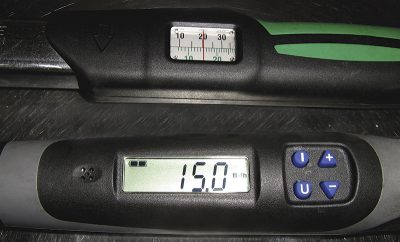
Use only primer that is approved for water-based paint systems. Each primer has a different “tooth,†or ability to grip the surface.
Once you have selected and applied the appropriate primer, observe the recommended flash-off time. If you apply the basecoat before the primer has dried, it may lead to a reduction of gloss and degradation of color.
Flash-off between the basecoat and clear coat typically involves raising booth temperature to approximately 176 deg. F. until the paint has skinned over. However, the vehicle body temperature must be reduced back down to 104 deg. F. before the clear coat can be applied. If the body is too hot, the clear coat will dry before it has time to completely flow-out, resulting in the always undesirable â€orange peel.â€
Different color substrate? Consider using a tinting primer or sealer. Worried that a color may not cover well? Don’t. Technological advancements have come a long way since the introduction of water-based paints, and today’s products offer excellent coverage. Don’t make the mistake of spraying heavily to compensate for an assumption of low coverage. Also, don’t spray too wet in an attempt to get two-coat coverage in less time. The moisture in an excessively heavy coat may not evaporate fully before you spray the next coat, and can lead to blistering and adhesion problems.
Instead, thin the paint per the paint manufacturer’s mixing instructions. Spray a thin first coat for adhesion, flash-off, then apply up to two finish coats, depending on the product. If after drying you have a problem, sand and re-paint.
Solvent cures differently than water-based paints
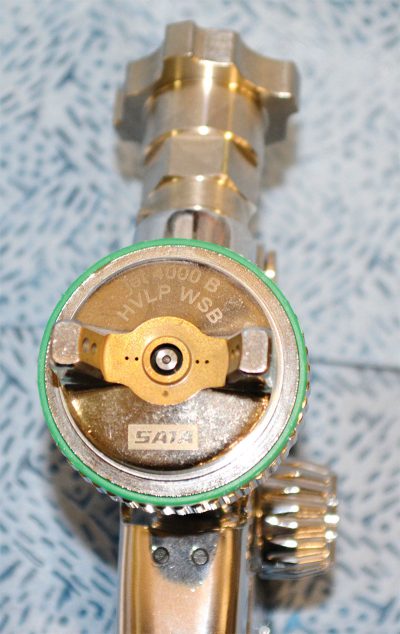
The solvent in oil-based paints contains a variety of chemical agents that cure at different rates. This allows the solvent to vaporize evenly, and helps give the cured paint a uniform film thickness and smooth surface finish.
It also means that solvent-based paints tend to dry with a minimal amount of adjustment of conditions in the booth. You could add heat to the booth on really cold days, but with solvent-based paints, most of your decision-making is done after choosing the correct reducer and spray gun settings.
Water is simple
Water-based paint contains only 10% solvent, versus up to 75% in solvent-based coatings. Of course, you still can compensate for different booth temperatures by adding slower or faster thinner/reducer, just as you did with solvent-based paints.
But water is simple. Unlike solvent, it has no built-in chemical agents to help manage its vaporization rate. So, you have to manage evaporation as part of the painting process.
Water that has not completely evaporated before you spray the next color or clear coat can become trapped under the acrylic latex as the paint or clear coat dries. This causes swelling or blistering of the coatings above the trapped moisture, or worse, loss of adhesion between layers in the paint film.
To prevent topcoat/clear coat swelling or blistering, allow time for water to evaporate after each step. If you must wet sand to remove a problem, allow approximately two hours at 68 deg. F. for water to evaporate. Your paint technical data sheet will tell you how much time to allow for flash-off between basecoat, additional coats, and clear. If in doubt, you can use a non-contact infrared thermometer to check whether the basecoat is dry enough to spray the next coat.
First, take a temperature reading of an area not in the freshly-repaired panel, for use as a baseline measurement. Next, measure and record the temperature of the just-painted panel. As water evaporates from the film, the panel will cool measurably. Check the temperature of the new paint every five minutes, until it has warmed back up enough to match the temperature of the panel that you did not paint. When a freshly-painted panel is as warm as nearby unrepaired areas, you can feel comfortable that enough water has evaporated to make it safe to spray the next coat.
Refer to the manufacturer’s paint data sheet,
and always follow the manufacturer’s film thickness instructions.
Just add air
Given the same booth temperature, humidity, and air movement, water-based paint may take longer than solvent-based product to flash off, or to dry enough to spray a topcoat over your base. If it is also a high-humidity day, you may need not only to select a fast reducer when mixing the paint, but also to increase airflow in the booth during the drying stage. In a market area that often gets afternoon rain showers during the summer, experienced painters schedule water-based spraying for the morning whenever possible.
To rev up water-based paint evaporation, add more airflow. You can reduce a high humidity level by increasing booth temperature, but only up to your tolerance for heat while you work. Higher temperature will help, but not as much as increased air flow.
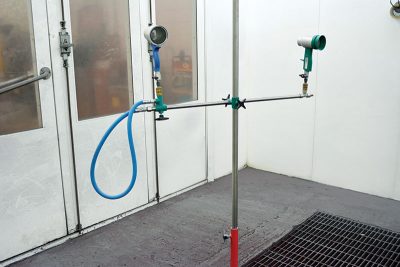
We do not want just more of the same downdraft flow. You need turbulent air, and that requires air flowing in multiple directions. The air around the vehicle in a downdraft booth gets saturated with moisture from evaporation. You can reduce that saturation by introducing additional airflow from a different direction than the laminar, or downdraft flow. The cross-flow pushes moisture out of the immediate area around the vehicle, and increases the amount of fresh oxygen molecules that come in contact with the paint film, making it easier to wick out moisture.
Portable and stationary air blowers, and infrared or regular heaters all are acceptable drying equipment.
Houston, Vegas, Seattle, Denver
It would be nice if ambient conditions in the booth were always perfect: not too wet, not too dry. Because temperature and humidity can vary greatly, even in the same booth and day, painters have to be able to adjust paint mixing formulas for ambient conditions.
Never fear — the learning curve for mastering how to match additives to the climate conditions and the paint product is not too steep. Every Volkswagen-approved paint manufacturer offers training. After training and a few days of practice, painters are ready for prime time.
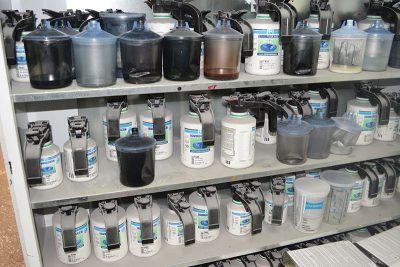
You can compensate for climate conditions at the mixing stage by including viscosity adjuster additives. Some are good for partial repairs, others for complete panel re-spray. Always consider temperature, humidity, and whether the job involves re-spraying a small area or the full panel, before deciding which additive is best for your repair.
The list of OE-approved reducer and hardener additives differs for different water-based paint product, e.g., two-part or three-part systems, solid color, or pearl/effects finishes, etc., but you must make the appropriate decisions to adapt the paint to temperature and humidity conditions in the booth. Each Volkswagen-approved paint manufacturer provides all of these options and more in a chart format that lets you see the choices side-by-side, so decision-making is easy. Check the climate chart in the paint manual to identify which reducer is best for a given set of in-booth environmental conditions.
Is It Dry Yet?
Water-based paint formulations typically contain more solids – 20% versus 15% pigment, metallic, or pearlescent particles in solvent-based coatings. The higher solids content of water-based paint offers very good hiding power. Once you master the application process, you should enjoy a significant reduction in both the amount of paint required and in labor time per job.
With the proper air flow, some water-based paint dries faster than solvent-based. The big benefit can be faster flash times, which leads to shorter cycle time and higher booth throughput. Painters must pay more attention however, to details that affect how the pigment flakes settle in the paint film. Chief among these are how wet you spray, and how you manage the amount of time it takes for the paint to dry.
Paint gets some of its color from metallic flakes or pearls in the cured film. Gravity makes the flakes tend to turn from a horizontal to a vertical orientation as they sink in the paint film. Before the paint is completely dry, the flake has flattened, or “floped†into a horizontal position.
As ambient light reflects through the pigment and out of the paint film, it lightens the appearance of the color. If the flake settles at an angle that does not reflect light as the paint manufacturer intended, the color will not match the rest of the vehicle. For example, if the desired position is horizontal, but the flake settles in a more vertical angle, it will reflect less light out. An observer will see darker areas where the flakes are more vertical, and lighter color where the flop is more horizontal or flat.
Some pearl finishes feature a spherical particle instead of a flat flake. A sphere reflects the same amount of light when seen from any angle, so there is no vertical or horizontal orientation issue to consider. Still, color appearance is affected by drying time. The depth the pearl has reached when the film is dry determines the amount of light that is reflected out of the paint film. Pearl particles that dry in the middle of the film will reflect more light and make the color appear brighter than pearls that settle at the bottom.
Controlling the flop
With both flake and pearl particles, you control the color appearance by managing the rate of evaporation so that the color flakes are at the preferred angle and desired depth in the film by the time the paint has dried. In the case of pearl finishes, proper mixing and drying results in the pigment pearls all settling at the desired depth in the film. This gives the repaired panel a consistent color depth or saturation, so it has the same tone from edge to edge.
The paint manufacturer knows the correct amount of drying time to lock the flakes in at the desired depth and angle. Refer to the water-based paint application instructions from Volkswagen (or the paint data sheets) for details for the paint you plan to use.
Not too hot, not too cold
You cannot guarantee that your booth will always be in the ideal “Goldilocks†range of temperature, humidity, and air flow to support the perfect paint curing result. You can however, control your painting technique to compensate for the impact of weather variations on finish quality.
Follow paint manufacturer instructions about selection of primers and sealers, and how to adjust spraying times between coats to compensate for the different evaporation rates of various water-based paints. The benefits are many. You can achieve the desired final appearance with water-based in less time than with solvent-based paints. You can enjoy a high level of color match. Thanks to the bonding of molecules in latex paints, you will produce a durable long-term finish. And that’s better than a bowl of porridge any day.
Photos courtesy of Jim Ellis Collision Center, a Volkswagen Certified Collision Repair Facility in Atlanta, Georgia)

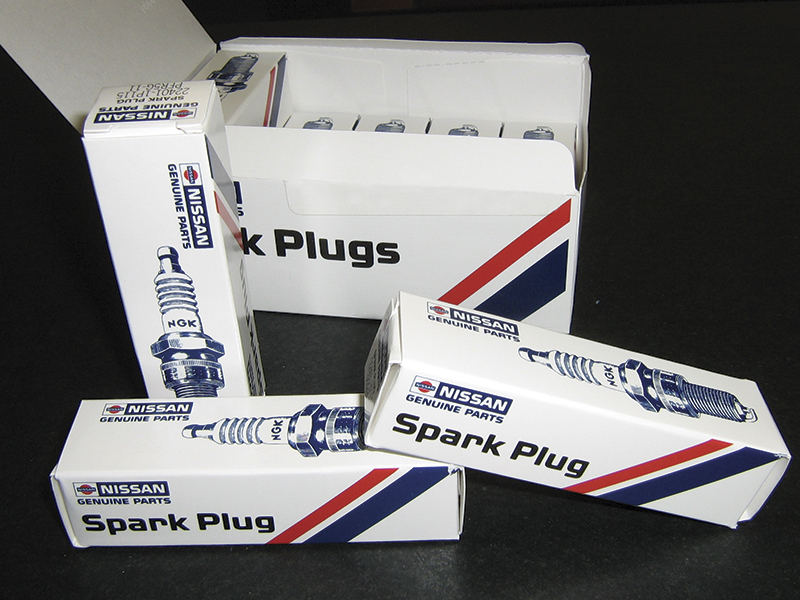



0 Comments